7 Tips for Working With an E-Decorating Service
Online design packages have a lot to offer, including affordability and convenience. Here’s what you can expect
If you’re stuck on where to begin a room design, can’t figure out a functional furniture layout, are confounded by window treatment options, need advice on where to hang art, feel completely helpless when choosing colors — or all of the above — e-decorating (also referred to as “e-design") may be the perfect solution. E-decorating services (not to be confused with full design services being offered remotely in response to the COVID-19 crisis) are an affordable option for getting expert professional guidance online when designing a room. What an e-decorating package includes varies from designer to designer. Here are how four design firms on Houzz approach e-decorating, along with tips on how to make the most of the e-design experience.
1. Ask What the E-Decorating Package Will Include
Designers will typically offer value-oriented e-decorating packages at prices that include limited consultation time and a set amount of deliverables. Deliverables are items like moodboards, shopping lists (often with links to the items for easy purchasing), furniture layouts, floor plans, 3D renderings, paint palettes and revisions. These deliverables will vary from designer to designer. If you’re someone who struggles to visualize the end result, make this clear to your designer. Ask them what kind of renderings are included with your e-decorating package, or whether they can direct you from afar while you move furniture around the room.
In addition to deliverables, ask your designer how you’ll be communicating with them and how much communication the package includes. Because e-decorating is less expensive than full services, the consultation time and revisions are usually limited.
Interior designers Joann Kandrac and Kelly Kole of Kandrac & Kole Interior Designs offer e-decorating packages that vary depending on the room. They range from $800 for a powder room to $1,800 for a kitchen. After getting to know a client’s goals, budget and style through a phone call and follow-up client homework, Kandrac and Kole take about two to three weeks to deliver a floor plan, moodboards, paint palette, clickable shopping list and their “love notes” about the design.
Designers will typically offer value-oriented e-decorating packages at prices that include limited consultation time and a set amount of deliverables. Deliverables are items like moodboards, shopping lists (often with links to the items for easy purchasing), furniture layouts, floor plans, 3D renderings, paint palettes and revisions. These deliverables will vary from designer to designer. If you’re someone who struggles to visualize the end result, make this clear to your designer. Ask them what kind of renderings are included with your e-decorating package, or whether they can direct you from afar while you move furniture around the room.
In addition to deliverables, ask your designer how you’ll be communicating with them and how much communication the package includes. Because e-decorating is less expensive than full services, the consultation time and revisions are usually limited.
Interior designers Joann Kandrac and Kelly Kole of Kandrac & Kole Interior Designs offer e-decorating packages that vary depending on the room. They range from $800 for a powder room to $1,800 for a kitchen. After getting to know a client’s goals, budget and style through a phone call and follow-up client homework, Kandrac and Kole take about two to three weeks to deliver a floor plan, moodboards, paint palette, clickable shopping list and their “love notes” about the design.
Interior designer Sabrina Alfin offers three tiers of e-decorating service, each with different deliverables. The least expensive package costs $499 per room. Her more expensive tiers include extras such as revisions and 3D renderings like this one.
As designers gain more experience with e-decorating, they tweak their packages and pricing to give clients the best experience and value. For example, interior designer Ellen Nystrom first tested out the e-decorating landscape years ago by signing up with large online decorating companies. “I found I had to skip important steps when I had to work within their set services and prices,” she says. When she decided to create her own e-decorating service, she wanted to improve the client experience. “I wanted to tailor my e-decorating service to function more like my usual design process so that I could be more thorough,” she says.
With her e-decorating service, clients still buy items themselves through retail sources, and she doesn’t include things like custom built-ins or bedding. But she offers a number of meetings and revisions, just as she would with full services. This includes follow-up meetings via Zoom, revisions and tweaks. Her packages start at $3,500 per room.
With her e-decorating service, clients still buy items themselves through retail sources, and she doesn’t include things like custom built-ins or bedding. But she offers a number of meetings and revisions, just as she would with full services. This includes follow-up meetings via Zoom, revisions and tweaks. Her packages start at $3,500 per room.
After gauging demand, Nystrom also tailored an e-decorating bathroom package. This service includes an important full-service deliverable: bid sets. Bid sets are CAD drawings that contractors can use to formulate estimates. This service costs $7,500.
2. Communicate Your Needs
Designers have well-honed communication skills that allow them to get to know your needs and style efficiently. Make sure to have a list of the issues and questions you have about your space in front of you during your first contact, or include them in your initial email. Also, let the designer know which projects in their portfolio made you want to hire them, and what you admired about those spaces.
Kandrac and Kole’s process begins with an initial phone call, and they mine a wealth of information in about 15 minutes. “We find out about what our client’s goals are and their budget. We explain what they can expect,” Kandrac says. “Communication is the biggest thing. We really figure out if we click in that first conversation.”
Designers have well-honed communication skills that allow them to get to know your needs and style efficiently. Make sure to have a list of the issues and questions you have about your space in front of you during your first contact, or include them in your initial email. Also, let the designer know which projects in their portfolio made you want to hire them, and what you admired about those spaces.
Kandrac and Kole’s process begins with an initial phone call, and they mine a wealth of information in about 15 minutes. “We find out about what our client’s goals are and their budget. We explain what they can expect,” Kandrac says. “Communication is the biggest thing. We really figure out if we click in that first conversation.”
3. Find Out What You Need to Do on Your End
With e-decorating services, you’ll be saving money by doing some of the work that a designer providing full services would have done for you. Some designers will provide a questionnaire about your needs and style. Be specific about the colors and materials you like, as well as those you don’t. To make the most of this abbreviated e-decorating process, a designer will study these things to get to know your style before the consultation. Your designer will let you know what they’ll need you to pull together. Typically this includes:
How to Create and Use Ideabooks
With e-decorating services, you’ll be saving money by doing some of the work that a designer providing full services would have done for you. Some designers will provide a questionnaire about your needs and style. Be specific about the colors and materials you like, as well as those you don’t. To make the most of this abbreviated e-decorating process, a designer will study these things to get to know your style before the consultation. Your designer will let you know what they’ll need you to pull together. Typically this includes:
- Photos of your space and of existing items you’d like to have integrated into the new design. You may also want to include photos of adjacent spaces so the new design will be cohesive with the rest of your home.
- Questions and issues you have regarding the space.
- Houzz ideabooks that include notes about what you like about the inspiration photos you chose.
- Measurements of the space, including the locations and measurements of things such as windows, doors and existing built-ins. Most designers will send you detailed instructions to help you measure correctly.
How to Create and Use Ideabooks
Interior designer Katrina Bogart offers a two-hour virtual consultation service for $320. This allows clients to get a feel for what it’s like to work with a designer at an affordable price. “This is a great way for people to get kick-started on a design,” she says.
Before the consultation, the designer begins by sending customers a punch list of things to send her, including photos of the rooms, questions and issues they have and inspiration photos of rooms they admire. After clients complete this work, Bogart puts time and thought into analyzing it all. “This helps me acclimate to the spaces they want to work on and get a sense of their needs,” she says. Based on this information, she pulls together things she thinks the client will like before the consultation begins.
Kandrac and Kole have the process of figuring out a client’s style and needs down to a science. “We have learned what kinds of questions to ask in that initial phone call and on our questionnaire, and we study what our clients like in their Houzz ideabooks. So we really learn what will make them happy,” Kandrac says.
The more you put into the homework, the better your designer will know you and your style. This will lead to a satisfying result.
Find a local painter
Before the consultation, the designer begins by sending customers a punch list of things to send her, including photos of the rooms, questions and issues they have and inspiration photos of rooms they admire. After clients complete this work, Bogart puts time and thought into analyzing it all. “This helps me acclimate to the spaces they want to work on and get a sense of their needs,” she says. Based on this information, she pulls together things she thinks the client will like before the consultation begins.
Kandrac and Kole have the process of figuring out a client’s style and needs down to a science. “We have learned what kinds of questions to ask in that initial phone call and on our questionnaire, and we study what our clients like in their Houzz ideabooks. So we really learn what will make them happy,” Kandrac says.
The more you put into the homework, the better your designer will know you and your style. This will lead to a satisfying result.
Find a local painter
4. Find Out How Much Follow-Up the Package Includes
After preparing her ideas for her e-decorating clients, Bogart schedules a virtual consultation via Zoom. Clients virtually walk her through their spaces and she gives them her recommendations and suggestions. She follows up with a space-by-space summary of her recommendations and suggestions in an email. She also includes purchasing links to suggested items, making it easy for her clients to shop.
Some clients get all they need out of the service, while others decide they want to commit to more extensive and customized full design services. “I make it clear that I can’t design your room fully in a virtual consult. The service is for my insight and advice only,” Bogart says. But it is comprehensive advice that helps clients pull the entire space together, including suggestions for furniture layouts, paint colors, rugs, lighting, window treatments, art placement, and a list of all of the items to buy to pull the look together.
Kandrac says their questions and subsequent analysis of the client’s style, space and needs result in a final presentation “that’s usually a perfect 10.” However, she notes that if it’s not, and a client wants to change a few things, they will follow up and tweak the design, within reason.
After preparing her ideas for her e-decorating clients, Bogart schedules a virtual consultation via Zoom. Clients virtually walk her through their spaces and she gives them her recommendations and suggestions. She follows up with a space-by-space summary of her recommendations and suggestions in an email. She also includes purchasing links to suggested items, making it easy for her clients to shop.
Some clients get all they need out of the service, while others decide they want to commit to more extensive and customized full design services. “I make it clear that I can’t design your room fully in a virtual consult. The service is for my insight and advice only,” Bogart says. But it is comprehensive advice that helps clients pull the entire space together, including suggestions for furniture layouts, paint colors, rugs, lighting, window treatments, art placement, and a list of all of the items to buy to pull the look together.
Kandrac says their questions and subsequent analysis of the client’s style, space and needs result in a final presentation “that’s usually a perfect 10.” However, she notes that if it’s not, and a client wants to change a few things, they will follow up and tweak the design, within reason.
Nystrom includes more follow-ups and revisions than the average e-decorating package, which is reflected in her pricing. She built a number of follow-up Zoom meetings and revisions into the cost. “My intent was to create a process that was more thorough than what I had experienced with the online decorating companies,” she says. “I wanted a chance to deliver a conceptual package, incorporate my clients’ feedback and make adjustments. This usually requires three Zoom meetings.”
Check with individual designers you’re interested in to see if follow-up questions and revisions are part of the e-decorating package. After clients receive their deliverables, most designers will answer a few follow-up questions. Their goal is to thrill you with what they present. But if your space presents complicated issues, or you decide you like the process and want to keep going, you may decide you’re ready to upgrade to full design services.
Find an interior designer on Houzz
Check with individual designers you’re interested in to see if follow-up questions and revisions are part of the e-decorating package. After clients receive their deliverables, most designers will answer a few follow-up questions. Their goal is to thrill you with what they present. But if your space presents complicated issues, or you decide you like the process and want to keep going, you may decide you’re ready to upgrade to full design services.
Find an interior designer on Houzz
5. Be Clear About Your Budget
Share your budget so that your designer can come up with shopping suggestions that suit it. Designers can advise on the best way to phase in a plan over time and help you prioritize where you invest your money. This will help guide future purchases as you can afford them.
In the initial phone call, Kandrac and Kole ask their potential clients if they’re comfortable with a high-low strategy. This means splurging on one or two important and special pieces that will truly make the space, then balancing the budget with less expensive pieces.
Kandrac notes that it’s fine to save over time and shop as the budget allows or sales occur. But she warns clients that not all of the items the designers recommend may be available months down the road. “When this happens, say with a lamp, we let our client know to try and match the scale of the one we picked out. And that we like to choose 150-watt lamps to give off enough light,” she says. “So many times people don’t understand scale. The most important thing we tell them is to stick to the size.”
Share your budget so that your designer can come up with shopping suggestions that suit it. Designers can advise on the best way to phase in a plan over time and help you prioritize where you invest your money. This will help guide future purchases as you can afford them.
In the initial phone call, Kandrac and Kole ask their potential clients if they’re comfortable with a high-low strategy. This means splurging on one or two important and special pieces that will truly make the space, then balancing the budget with less expensive pieces.
Kandrac notes that it’s fine to save over time and shop as the budget allows or sales occur. But she warns clients that not all of the items the designers recommend may be available months down the road. “When this happens, say with a lamp, we let our client know to try and match the scale of the one we picked out. And that we like to choose 150-watt lamps to give off enough light,” she says. “So many times people don’t understand scale. The most important thing we tell them is to stick to the size.”
As with the other designers, Nystrom’s sourcing is generally retail and her e-decorating clients do the purchasing themselves. “There are no custom built-ins or window treatments, but I may recommend a local reupholstery shop, artist or one-of-a-kind piece online they should check out. These kinds of things will add special and unique touches,” she says.
6. Be Aware That What You See on Your Screen May Look Different in Person
Looking at design online is convenient, but screens can alter colors; textile and tile dye lots can cause colors to vary from batch to batch; and the light in your home can bring out different hues in paint and fabric colors. With full design services, designers provide clients with samples of things such as fabrics, tile, rugs and finishes. But with the abbreviated design services offered in e-decorating, you’ll be doing the shopping yourself rather than purchasing through a designer. Often this means you’ll be ordering samples or checking things out in person in a store.
It’s also wise to buy samples of paint colors a designer has suggested and do a large test swatch on the wall. Check out how it looks at different times of the day and with different lighting schemes.
Looking at design online is convenient, but screens can alter colors; textile and tile dye lots can cause colors to vary from batch to batch; and the light in your home can bring out different hues in paint and fabric colors. With full design services, designers provide clients with samples of things such as fabrics, tile, rugs and finishes. But with the abbreviated design services offered in e-decorating, you’ll be doing the shopping yourself rather than purchasing through a designer. Often this means you’ll be ordering samples or checking things out in person in a store.
It’s also wise to buy samples of paint colors a designer has suggested and do a large test swatch on the wall. Check out how it looks at different times of the day and with different lighting schemes.
7. Pay Attention to Return Policies and Read Reviews
Because full design services include doing the shopping for you, designers are usually responsible for anything wrong with the items ordered. But with e-decorating, you’ll be doing your own shopping via retail, and the onus of replacing items will be on you. If you’re unable to check things out in person, request that vendors send you textile, wallpaper and paint samples if possible. And carefully review each vendor’s return policy.
One other thing to be aware of is e-decorating offered by retail sites that want you to shop exclusively through them. That means they’re making additional money off the items you purchase. “The design fee from services like this may be cheaper, but you get what you pay for,” Kandrac says.
Because full design services include doing the shopping for you, designers are usually responsible for anything wrong with the items ordered. But with e-decorating, you’ll be doing your own shopping via retail, and the onus of replacing items will be on you. If you’re unable to check things out in person, request that vendors send you textile, wallpaper and paint samples if possible. And carefully review each vendor’s return policy.
One other thing to be aware of is e-decorating offered by retail sites that want you to shop exclusively through them. That means they’re making additional money off the items you purchase. “The design fee from services like this may be cheaper, but you get what you pay for,” Kandrac says.
Once you know what to expect, e-decorating is a wonderful service that will give you a good idea of what it’s like to work with a designer. Whether you need to kick-start a project, you’re stuck creatively or you’re looking to shake up your look, it’s an affordable and fun way to receive valuable help from an expert.
Another advantage to this model is that clients aren’t limited by geography. If you admire the work of a designer on Houzz who is based across the country and who offers e-decorating services, you can hire them.
“This is a very attainable service and I get calls from all over the United States,” Bogart says. “I feel good about what I can deliver and what my clients will walk away with. E-decorating also helps people see the value in a designer’s expertise.”
More on Houzz
Read more stories about working with pros
Hire a design pro
Shop for your home
“This is a very attainable service and I get calls from all over the United States,” Bogart says. “I feel good about what I can deliver and what my clients will walk away with. E-decorating also helps people see the value in a designer’s expertise.”
More on Houzz
Read more stories about working with pros
Hire a design pro
Shop for your home
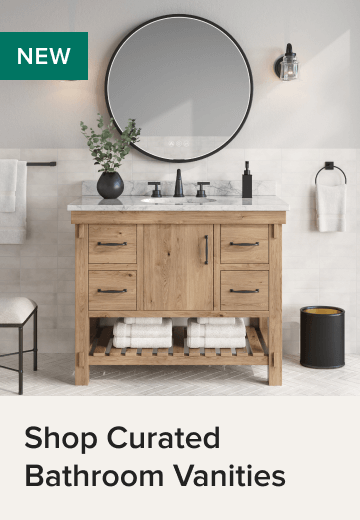
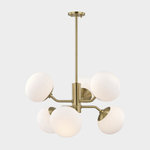
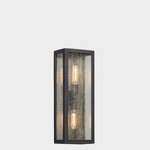
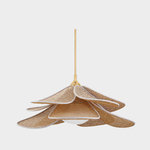
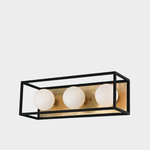
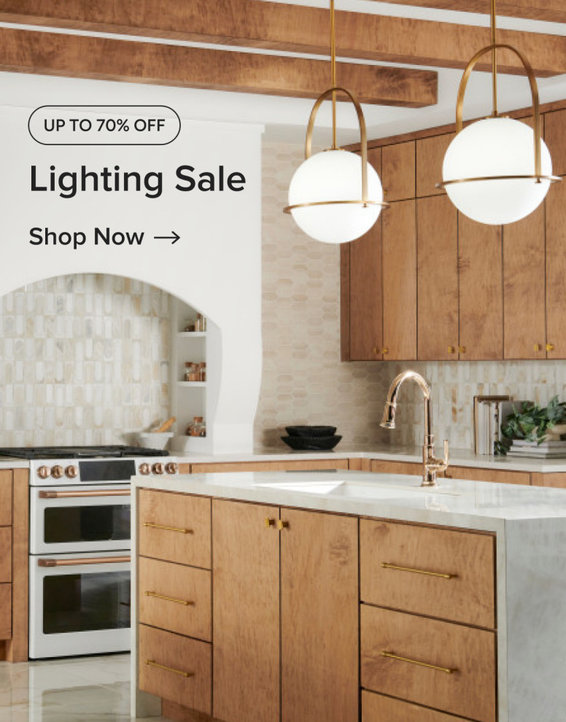




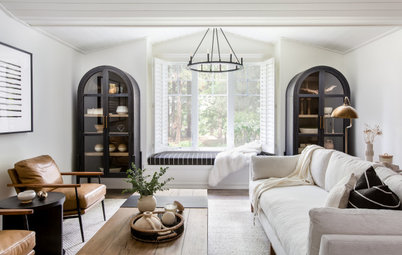
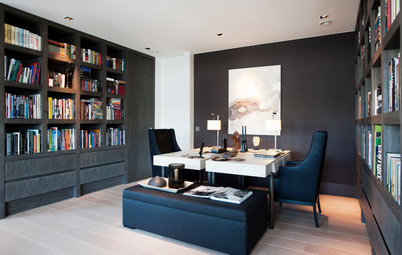
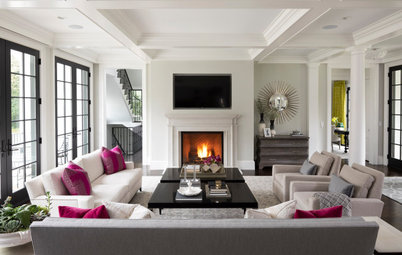
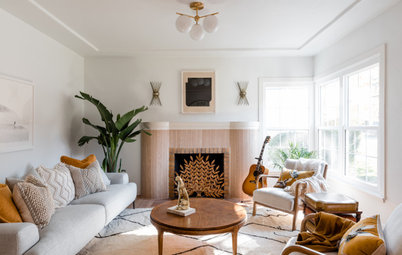
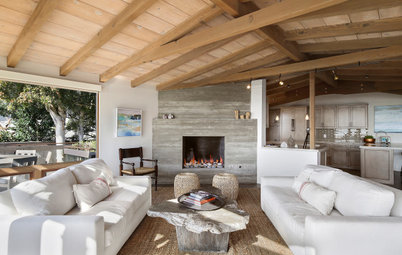
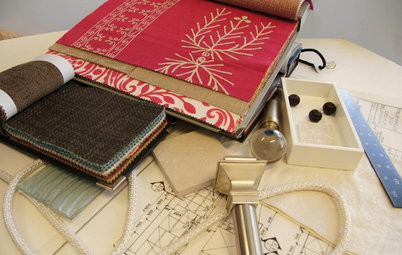
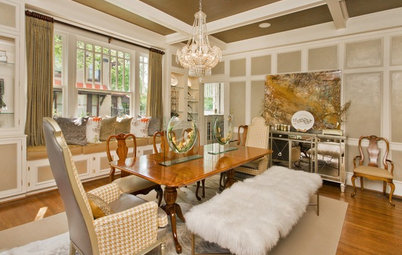
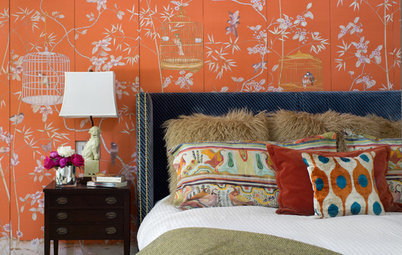
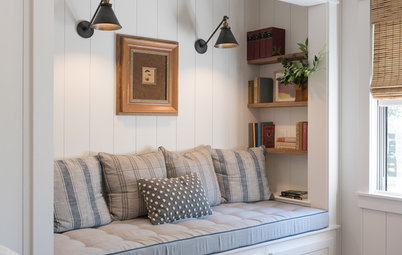
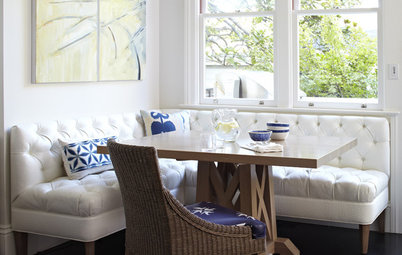
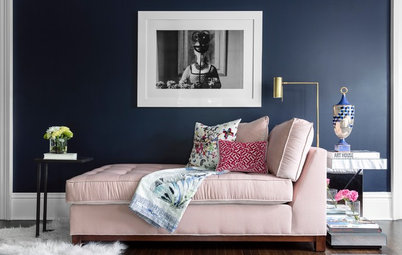
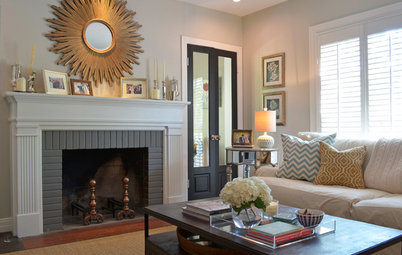
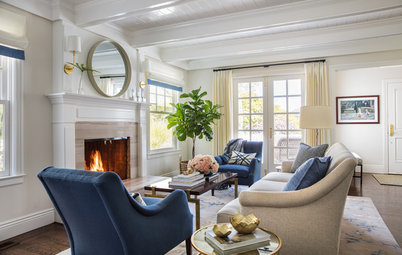
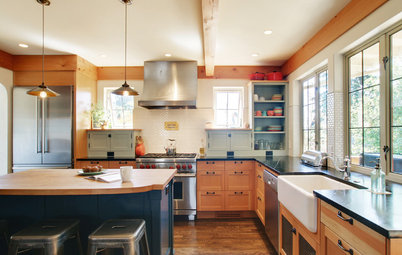
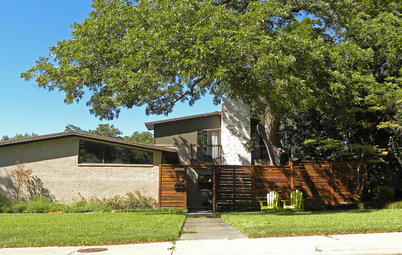
Many designers find that clients who start off with e-decorating services ultimately decide to go further and sign up for more extensive design services. Full services include custom work (such as designing built-ins, furniture and bedding), measuring for you, and the designer being responsible for all ordering and purchases, among other things. Full services will also get you access to “trade only” items and visits to showrooms with your designer, whereas e-decorating is usually limited to retail shopping you do yourself.
Find an interior designer on Houzz